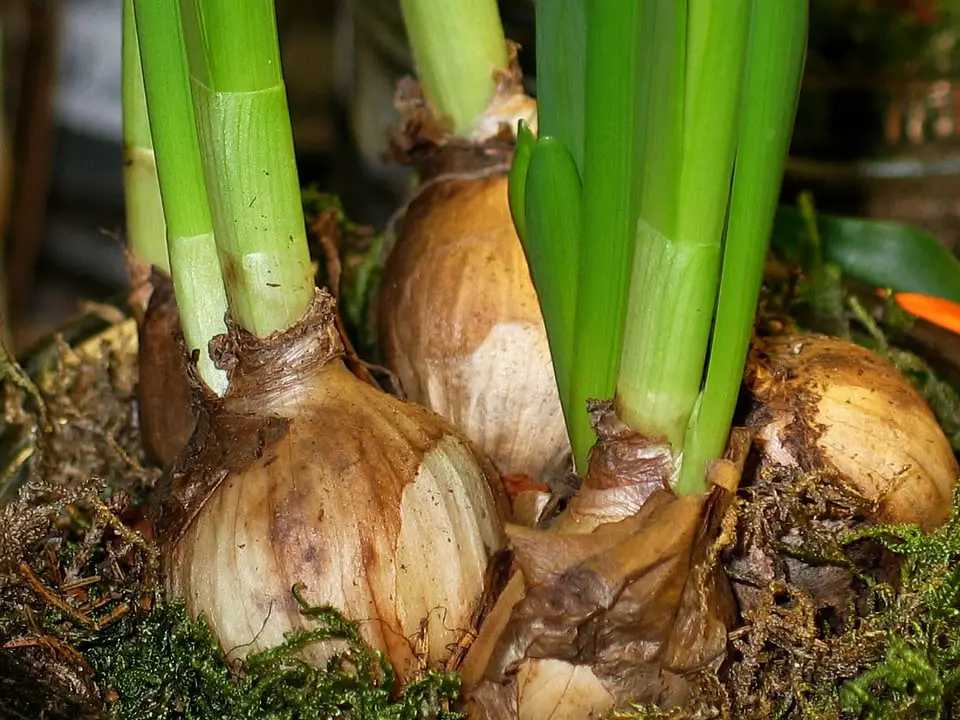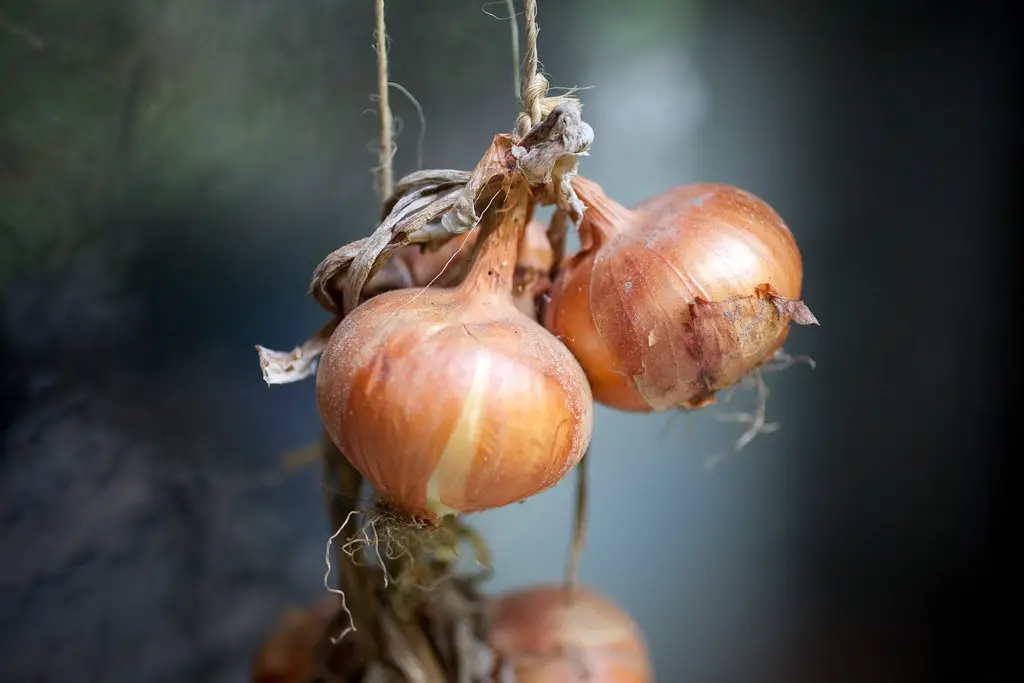Each vegetable has different uses according to the civilization in which it is found. Vegetables can be used in the shape of a mixture as well. One of the main vegetables which are almost mixed in almost every dish and also eaten raw is onion. If you want this one at home, then you need to learn how to plant yellow onion bulbs.
Vegetables are the pure gift of mother nature. These are the flavors of life. One would have gotten bored with the meat and other sweets if vegetables were not there. We all know that there are a lot of vegetables. Even people who choose these (vegetables) as a lifestyle are also, known as vegetarians.

Yellow Onions
As we know there are different types of onions. These include red, white, and yellow as the main categories. Onions are also classified based on hours of sunlight required to set the bulb. It includes short days, intermediate days, and long days.
Yellow onions are intermediate-day onions. They need 13 to 14 hours of sunlight to set the bulb. So, while planting yellow onions keep this thing in mind. Yellow onions are quite common in the United States. According to one estimate, up to 90 percent of all storage onions consist of yellow onions.
These onions are ready to go. You can eat them, and use them in cooking soon after harvesting. There is also one other type of yellow onion, called Spanish onions. These Spanish onions are slightly sweeter than yellow onions when used in raw form.
Why Plant Yellow Onions?
Importance in the Food Chain
First of all, as we know onions are one of the main ingredients of food around the world. These are eaten raw as well as used in almost all the dishes across continents and cultures. Also, onions provide some basic nutrition to the body like potassium, protein, and other nutrients.
Characteristics of the Yellow Onions
If you don’t want to eat the yellow onions in raw form, you can cook them. These have good taste and are healthy to eat. The yellow onions have a fantastic taste in their way as these onions contain a very high amount of sulfur.
This high sulfur content makes it possible for the yellow onion’s flavor to shine. That’s why the yellow onions are caramelized. The amount of flavor while caramelizing yellow onions, as compared to red or white is much higher.
White onions are used as raw, red onions pickled or grilled, while yellow onions are the best when caramelized or roasted. You will enjoy their taste.
Easy to Take Care
Onions in general and yellow onions specifically are easy to take care of. You just need to follow some basic requirements and you are good to go. These onions are of great value concerning time spent on growing and taking care of them.
How to Plant Yellow Onion Bulbs
Yellow onions can be planted from seeds; from there you will be able to develop bulbs. Also, you can get the sets from the gardening or horticulture site. We are going to discuss both ways. In colder areas like zone 5 or above it might be necessary to develop sets of onion bulbs from seeds.
Growing Yellow Onions Bulbs from Seeds
As the yellow onions are the vegetable of cold times, you need to get the seeds and start sowing indoors 8 to 10 weeks before the last frost of the season. You just need to get the rich gardening soil and moisten it.
Then add the onion seeds to it. Keep it moist. You will get the onion bulbs soon. After germination has started do look for weeds. Take the weeds off and then your onion bulbs are ready to be transplanted.
Getting Yellow Onions Sets
Besides growing yellow onion bulbs from seeds, you can also plant them from sets. You just need to get the sets. It is said that sets have a quicker harvest time, and the danger of the transplantation shock is reduced for the plants.
You can get the sets once your place is ready to plant the yellow onion bulbs. These are easily available at gardening stores or horticulture sites.
Selection of Soil for Planting Yellow Onions Bulbs
The suitable soil is important for the quick and successful plantation of yellow onions. You need to till the soil well because the onions need a good amount of soil depth. In the gardens, they need at least 4 inches in depth. In beds or containers, they need 4 to 6 inches in depth.
Make sure soil is rich in terms of nutrients. Because the crop is going to be due in a short period it needs good fertile soil. You can add an organic composted mixture to it. Also, you can add chemical fertilizers like a mixture of phosphorus to make sure your soil has enough nutrients.
Also, make the soil loosened and well-drained. Loosened soil will help in growing the bulbs smoothly. The well-drained soil will help in avoiding the roots from rotting.
You May also like
How to Plant Crocus Bulbs Indoors
Planting Elephant Ear Bulbs In Pots
Transplanting / Planting Yellow Onion Bulbs
Now the soil and seeds are ready, you just need to transplant the bulbs. Loosen the upper layer of the soil. Then you have to plant the onions in rows. The best way is to dig a trench. This trench should be around 2 inches deep and 3 inches wide.
Now you should plant the bulbs/ sets. Choose the sets which are smaller like ¾ to an inch but not the bigger ones. Keep the distance of about 2 to 6 inches between the bulbs. Distance between rows should be 12 to 18 inches.
Set the yellow onion bulb ends pointing upward. Make sure the soil was moistened at the start. You can add water soon after the plantation. It will help the roots get to the ground. Don’t overwater the plants.
Taking Care of Yellow Onions Bulbs
Taking care of yellow onions is quite easy. You just need to make sure the basic requirements are met. Then you are good to go.
Watering Requirements of Yellow Onions
Do try to keep it moist. Check the upper layer of the soil with your finger. You need to provide supplementary water when there is no or less than 1-inch rainfall. Onions like moistened soil, but don’t water to the extent which can cause Stillwater in the planted area.
This may result in root rot. That’s why it is suggested to have well-drained soil so that an unnecessary amount of water doesn’t harm the yellow onions.
Sunlight Requirements for Yellow Onions
Yellow onions thrive well in the sunny areas. You need to provide around 5 to 6 hours of sunlight. It will help in the smooth growth of plants. If there is too much exposure to the sun, you can add shade later in the day.
Fertilizer Requirement for Yellow Onions
Yellow onions need fertilizer to grow smoothly. You need to add nitrogen-based fertilizers to the yellow onions to have stronger growth. You can make a schedule for it. Add fertilizers after three weeks of planting. Add fertilizers after every three weeks for proper growth.
Stop fertilizing the yellow onions once they have started pushing the soil away and the bulb has started to develop.
Pests and Diseases of Yellow Onions
Thrips are one of the common insects which attack the yellow onions. You can check it by knocking the top of the onions against the dark paper. These have a tan color. You can have insecticidal soap to kill them, or you can use any insecticide by experts.
The other one is onion maggots. The onion maggots lay eggs at the base of the plants. Keep the mulch away because of insects like decaying organic matter. This problem is common in very rainy areas. If you are in a dry area you don’t need to worry anymore.
Companion Plants of Yellow Onions
Companion plants help the main plants in growing smoothly. They can mutually benefit from each other and can result in more successful crops. Cabbage, Chamomile, and Carrots are good companion plants to yellow onions.
Harvesting Yellow Onions

Your onions will be ready in the mid-summers or late summers. Make sure to harvest the yellow onions quickly. If there is excess rain, onions can rot. In a too hot season, try to harvest in the morning.
Storing Yellow Onions
Once the yellow onions are harvested, you should keep them on the newspaper or cardboard. Rub off the dried roots. If onions are going to be harmed from that side, leave the stalks up to a few inches. Keep them in a cool and dry place. Avoid excess moisture as it can cause rot. You can store them in mesh bags.
In a nutshell, growing yellow onions will not only provide you with a great main supply of onions, but also you will enjoy the whole process of growing, caring for, and harvesting yellow onions.
You Might also be interested in growing
HOW TO GROW RED ONIONS FROM SCRAPS
How To Grow Sungold Cherry Tomatoes In Containers
References
https://homeguides.sfgate.com/plant-red-yellow-onion-bulbs-42324.html

